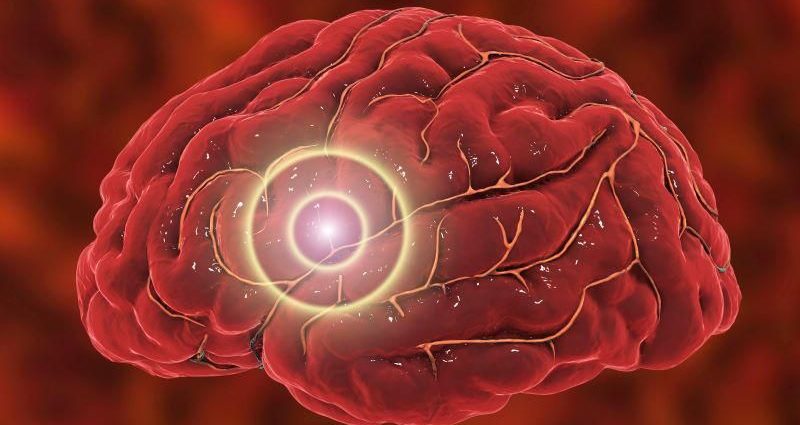THURSDAY, Dec. 22, 2022 (HealthDay News) — Researchers are studying whether deep brain stimulation could help people with Alzheimer’s hold on to their memory longer, and now a new finding may help refine the approach.
Deep brain stimulation (DBS) is an established treatment for several medical conditions, including epilepsy, Parkinson’s disease and obsessive-compulsive disorder. It involves implanting electrodes in certain areas of the brain to deliver electrical pulses that disrupt abnormal brain activity.
Researchers have also begun to study DBS as a possible way to help people with Alzheimer’s disease.
The hope is that, when given during the early stages of Alzheimer’s, DBS may slow the progression of memory loss.
So far, studies have been testing the effects of stimulating a brain area called the fornix — a bundle of nerve fibers that is a key part of the brain’s memory circuits. Research has shown that the fornix is damaged in people with milder Alzheimer’s, and it’s thought that DBS might improve the functioning of that faulty circuitry.
The results, however, have been mixed: Some study patients have shown evidence of a slowdown in memory loss, while others have not.
One question is whether that could be at least partly due to discrepancies in the specific placement of the DBS electrodes.
So for the new study, researchers looked back at data on 46 patients who’d taken part in an early trial of DBS for mild Alzheimer’s. They wanted to see if there were any correlations between particular sites of DBS stimulation and patients’ likelihood of responding to the treatment.
Researcher Dr. Andreas Horn said that going in, he was skeptical about whether they’d find any sweet spots.
But it turned out there were. The researchers found, for example, that better treatment responses correlated with DBS to the interface between the fornix and what’s called the bed nucleus of the stria terminalis — a band of fibers involved in emotional and behavioral responses.
The researchers then verified their findings by focusing on 18 patients whom they’d left out of the initial analysis. They found they were able to predict how those patients had responded to DBS based on where the electrodes had been placed in their brains.
The findings were published recently in the journal Nature Communications.
The goal, Horn said, is to fine-tune DBS targeting in the brain — from something of a “fuzzy” area to more precise sites.
“We’re not suggesting a new treatment strategy. We’re suggesting a more refined one,” said Horn, who is based at the Center for Brain Circuit Therapeutics at Brigham and Women’s Hospital in Boston.
He stressed, though, that no matter how refined DBS may become in the future, it will not cure Alzheimer’s.
“We want to prolong the period where people have a better quality of life,” Horn said.
And for now, he added, DBS remains “very investigational” as an Alzheimer’s treatment. That means patients need to be enrolled in a study to receive it.
A larger clinical trial, called ADvance II, is underway to test the effects of one year of DBS therapy for patients with mild Alzheimer’s.
Dr. Gabriel de Erausquin is a physician/researcher at the University of Texas Health Science Center at San Antonio, one of the medical centers involved in that trial.
He agreed that the new findings could be used to better target the DBS approach. “This is actually a beautiful study,” said de Erausquin, who was not involved in the research.
If the findings can ultimately help improve the effectiveness of DBS for Alzheimer’s patients, de Erausquin said, “that would be huge.”
The DBS technology involves different parts. The electrodes implanted within the brain are connected to a pulse generator via wires that are placed under the skin. That pulse generator, a pacemaker-like device, is implanted under the skin of the upper chest and programmed to automatically deliver electrical pulses to the brain electrodes.
DBS has been used since the 1990s to treat Parkinson’s, and it’s considered a generally safe therapy, de Erausquin said. But the surgery itself carries some risks, and over time parts of the DBS system can move or break.
Like Horn, de Erausquin stressed that DBS will not offer a cure. The usual course of Alzheimer’s, he noted, is a steady loss of function, and the hope is to put the brakes on that progression.
“We’re exploring the use of an established technology as a way to do that,” de Erausquin said. “Because right now, there’s nothing.”
More information
The U.S. National Library of Medicine has more on deep brain stimulation.
SOURCES: Andreas Horn, MD, PhD, Center for Brain Circuit Therapeutics, Brigham and Women’s Hospital, Boston; Gabriel de Erausquin, MD, PhD, MSc, Glenn Biggs Institute for Alzheimer’s and Neurodegenerative Diseases, University of Texas Health Science Center, San Antonio; Nature Communications, Dec. 14, 2022, online
Copyright © 2026 HealthDay. All rights reserved.

